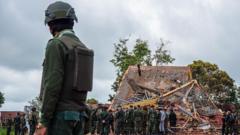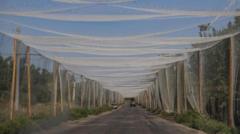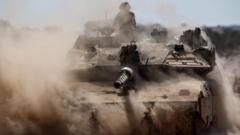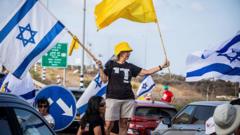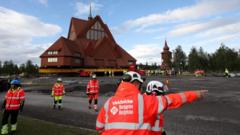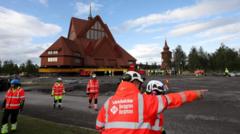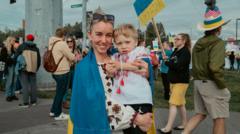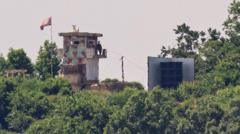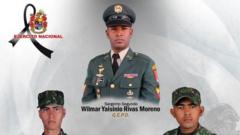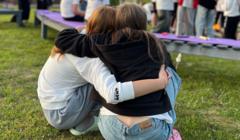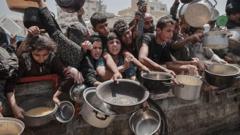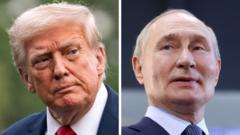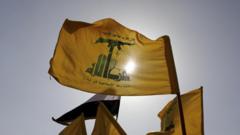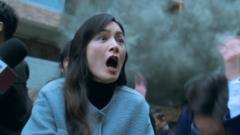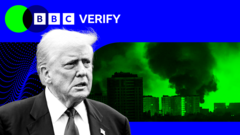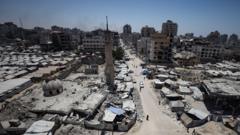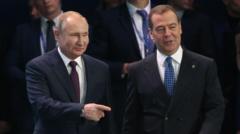The Druze community in Syria grapples with rising violence and a deteriorating sense of safety, as sectarian tensions flourish amidst a faltering state.
**Druze Community Faces Uncertainty and Distrust Amid Post-War Syria Turmoil**
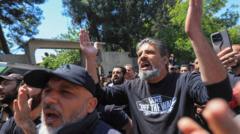
**Druze Community Faces Uncertainty and Distrust Amid Post-War Syria Turmoil**
Druze individuals express fears and concerns as sectarian violence escalates, raising questions of safety and loyalty in a fractured society.
The drumbeat of gunfire echoed through the once vibrant streets of Ashrafiyat Sahnaya, striking fear into the hearts of the Druze community. Lama al-Hassanieh barricaded herself in her bathroom, following the sounds of shouting men outside—some brandishing military-style garb and weapons—exclaiming “Jihad against Druze.” For hours, she felt unsafe, uncertain if her assailants were extremists, government forces, or unaligned factions. The Druze, a distinct religious group with origins in Shia Islam, have long tread a delicate path within Syria's precarious political landscape.
Historically, many Druze expressed allegiance to former President Bashar al-Assad, hoping their loyalty would shield them from the turmoil engulfing Syria during the protracted civil war. While initially protesting during the uprising, they were not met with the same violent reprisals faced by other sects. Maintaining their own militia for self-defense against radical Islamist groups, a volatile balance seemed to exist.
However, with Assad's regime teetering and Sunni Islamist rebels asserting dominance, a once-existing agreement has crumbled. Increasing assaults against Druze communities by militias connected to the government exacerbated fears of isolation and elimination. A particular moment of dread occurred when a falsely attributed audio insult by a Druze leader led to explosive violence that claimed numerous lives across various regions.
Lama Zahereddine, a pharmacy student whose aspirations were thwarted by the chaos, recalled harrowing scenes of gunfire and terror. As she along with many others fled their homes, they confronted a bitter reality that their claims to safety under the state appeared increasingly hollow. An ambiance of fear extended into educational spaces too; instances of direct physical assaults on Druze students illuminated the extent of sectarian animus that was brewing.
The grievances venturing beyond personal safety have instilled a profound distrust in the Syrian government. For many Druze, including the injured volunteer Hadi Abou Hassoun, the deterioration of security and absence of accountability kindles anxieties about a future dominated by radical ideologies rather than civic law. “When someone acts out of religious or sectarian hate, they don’t represent us,” Hadi asserted, calling out the deficient protective measures for his community.
Efforts for reclamation and assurance—while modest—have come from external actions, like recent Israeli airstrikes purportedly aimed at safeguarding the Druze. However, even as violence recedes, disillusionment towards governmental oversight prevails. In the aftermath, Lama reflects on a community steeped in suspicion. “Trust has been broken,” she noted. Many Druze are restless; they seek recognition as Syrians—with the same rights and privileges as anyone else—accompanied by appropriate judicial actions against aggressors.
Amid the uncertainty, a question looms—could this fragility further unravel the already complicated tapestry of Syrian society, threatening to plunge all communities into deeper despair and division?
Historically, many Druze expressed allegiance to former President Bashar al-Assad, hoping their loyalty would shield them from the turmoil engulfing Syria during the protracted civil war. While initially protesting during the uprising, they were not met with the same violent reprisals faced by other sects. Maintaining their own militia for self-defense against radical Islamist groups, a volatile balance seemed to exist.
However, with Assad's regime teetering and Sunni Islamist rebels asserting dominance, a once-existing agreement has crumbled. Increasing assaults against Druze communities by militias connected to the government exacerbated fears of isolation and elimination. A particular moment of dread occurred when a falsely attributed audio insult by a Druze leader led to explosive violence that claimed numerous lives across various regions.
Lama Zahereddine, a pharmacy student whose aspirations were thwarted by the chaos, recalled harrowing scenes of gunfire and terror. As she along with many others fled their homes, they confronted a bitter reality that their claims to safety under the state appeared increasingly hollow. An ambiance of fear extended into educational spaces too; instances of direct physical assaults on Druze students illuminated the extent of sectarian animus that was brewing.
The grievances venturing beyond personal safety have instilled a profound distrust in the Syrian government. For many Druze, including the injured volunteer Hadi Abou Hassoun, the deterioration of security and absence of accountability kindles anxieties about a future dominated by radical ideologies rather than civic law. “When someone acts out of religious or sectarian hate, they don’t represent us,” Hadi asserted, calling out the deficient protective measures for his community.
Efforts for reclamation and assurance—while modest—have come from external actions, like recent Israeli airstrikes purportedly aimed at safeguarding the Druze. However, even as violence recedes, disillusionment towards governmental oversight prevails. In the aftermath, Lama reflects on a community steeped in suspicion. “Trust has been broken,” she noted. Many Druze are restless; they seek recognition as Syrians—with the same rights and privileges as anyone else—accompanied by appropriate judicial actions against aggressors.
Amid the uncertainty, a question looms—could this fragility further unravel the already complicated tapestry of Syrian society, threatening to plunge all communities into deeper despair and division?

